Captain Costentenus, or the tattooed Greek prince, is a character often cited as the first person in the States to have his entire body covered in tattoos. 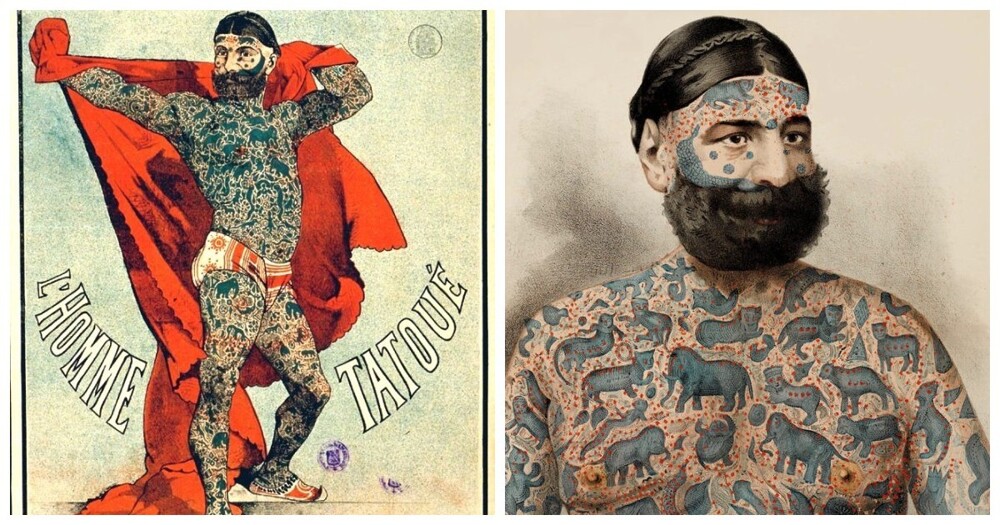
However, it is not. The first such person is believed to have been James F. O'Connell. According to evidence, O'Connell began his career as an entertainer in 1842, and Constentenus only in the 1870s. O'Connell was also the first tattooed man to write and publish an embellished biography of himself as an additional source of income. 
Although Costentenus was not the first, he became the most prominent tattooed person of the 1800s. Moreover, he was probably the most tattooed person in the world in that century. Even today, the scale of his tattoos cannot but surprise. He was the first person to show off a full body tattoo: his face, scalp, genitals, and even the skin between his fingers were all tattooed. The only part of his body not covered in patterns were the soles of his feet. 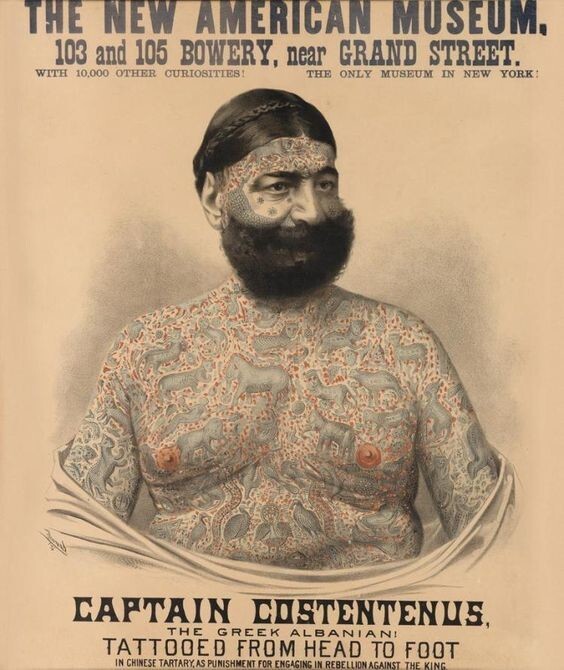
The designs were of Burmese origin, blue and red in color, and depicted mostly animals native to Burma and Eastern mythology.
Little is known about Costentenus. He was rumored to have been born in Albania in 1836, and it was believed that he tattooed himself solely to earn money. 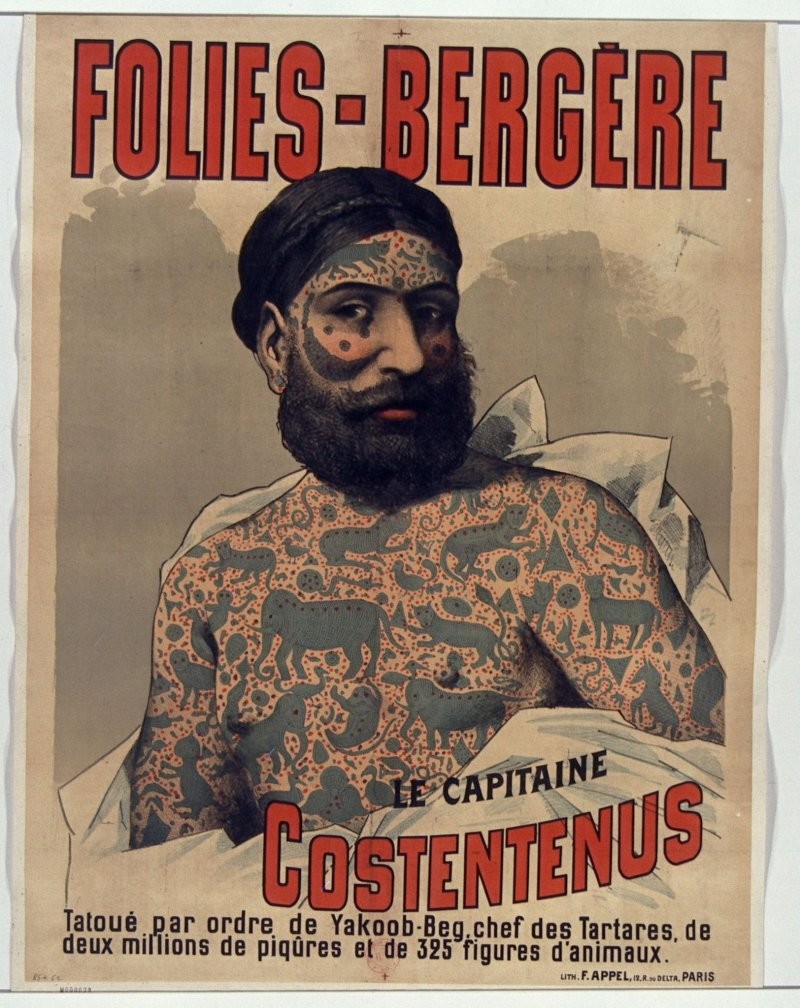
It is unknown who exactly did this work. His origin story includes the same "kidnapped and forcibly tattooed by the natives of a remote wild island" story that was common among his European counterparts and, of course, an absolute lie. The same story claimed that Captain Costentenus was in fact an Albanian prince. 
The person or people who made the tattoo were masters of their craft. Because the quality of the drawings was the most skillful that had ever been demonstrated at that time. As a result, Constentenus delighted dermatologists and other doctors. It was even studied in detail several times at the University of Vienna. 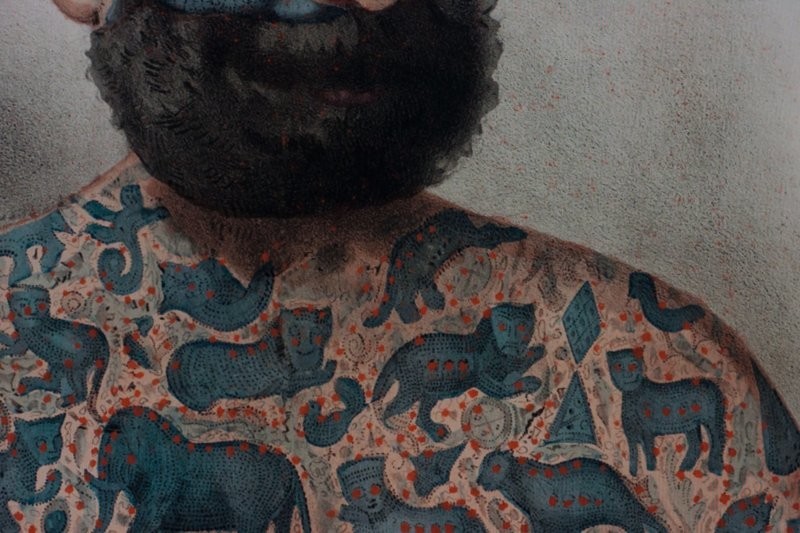
In the States, Costentenus was supervised by Farini and Barnum. And he turned out to be a very profitable artist. His weekly salary was $1,000, which he increased by selling his fictional biographies.
At the time of his death he was a wealthy man. He bequeathed half of his fortune to the Greek Church of London. He divided the other half between his colleagues in the arena and managers, demonstrating to the world not only his exotic appearance, but also his generous soul. 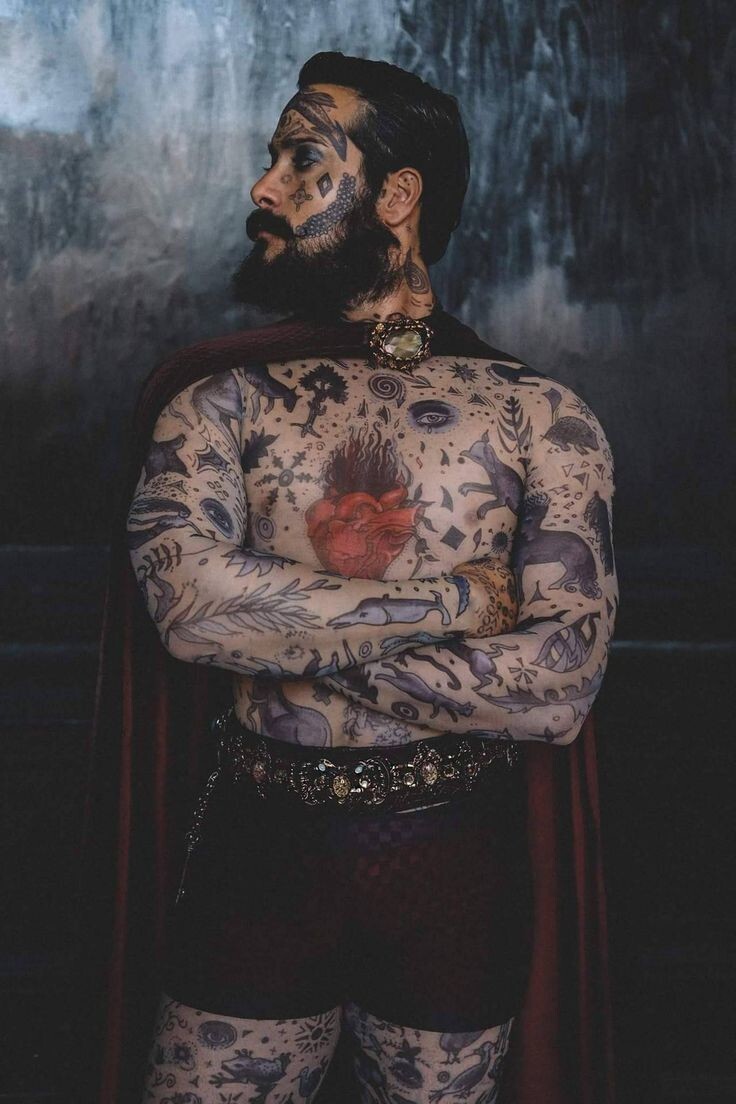
Shannon Holzapfel in The Greatest Showman 2017
Add your comment
You might be interested in:






















